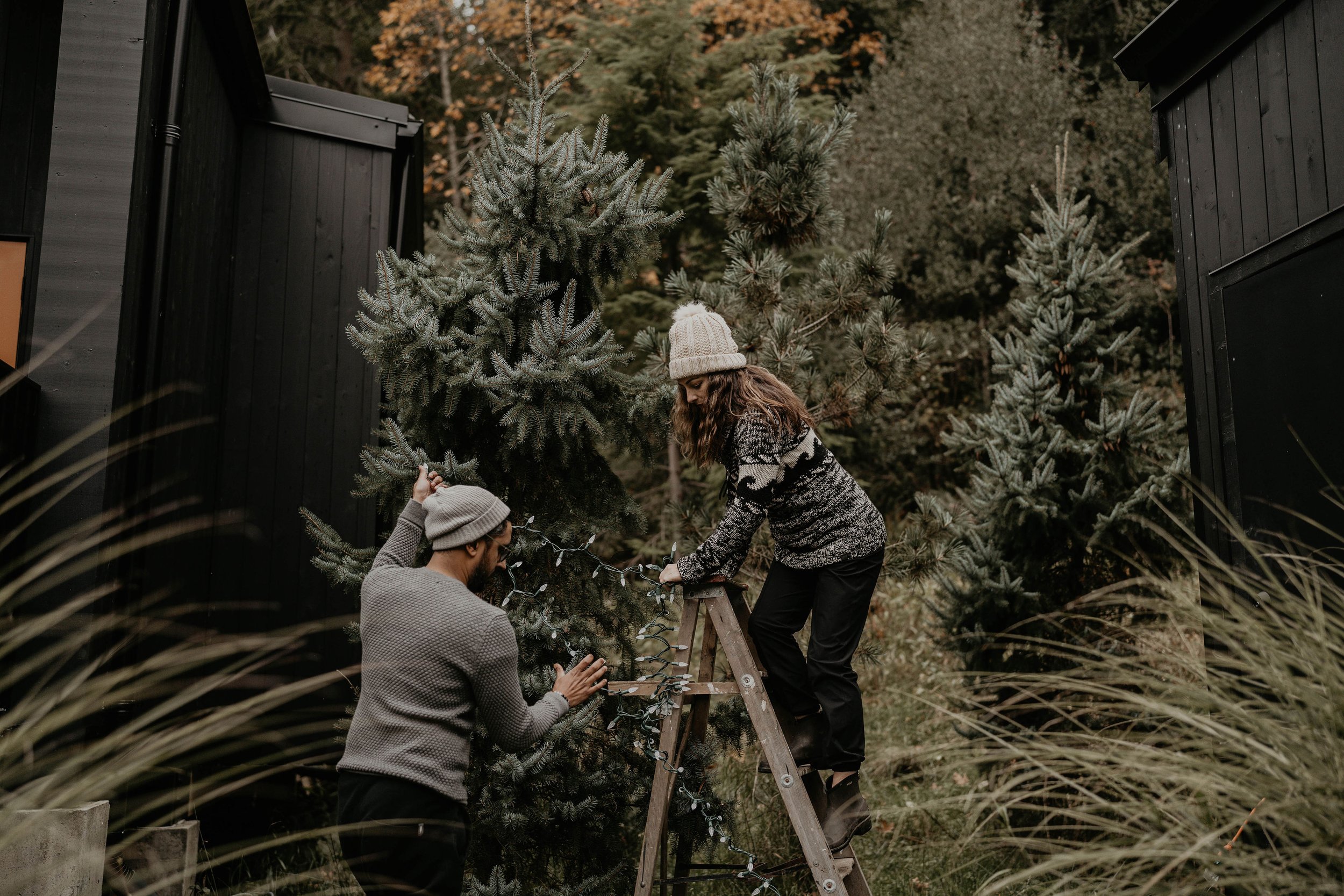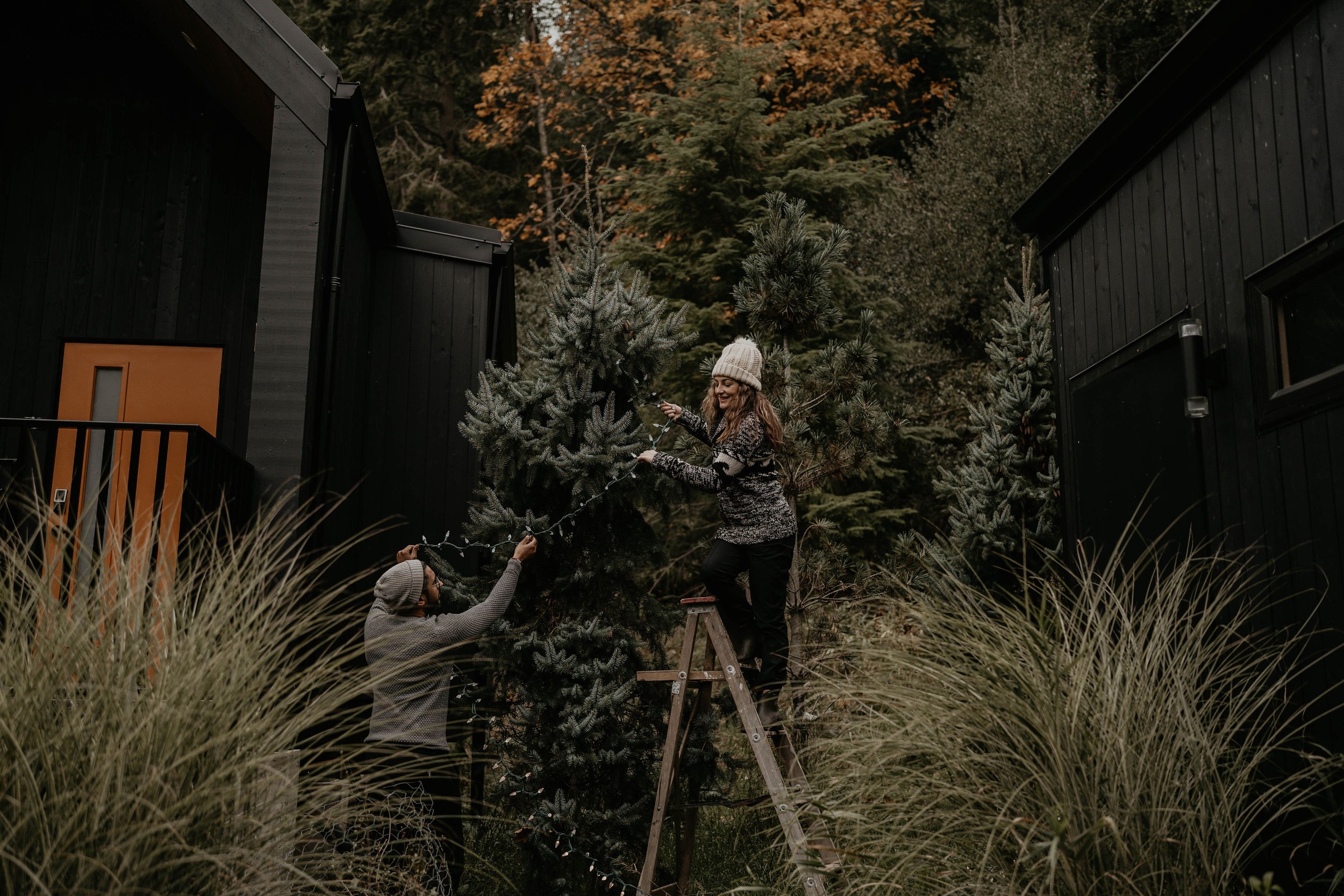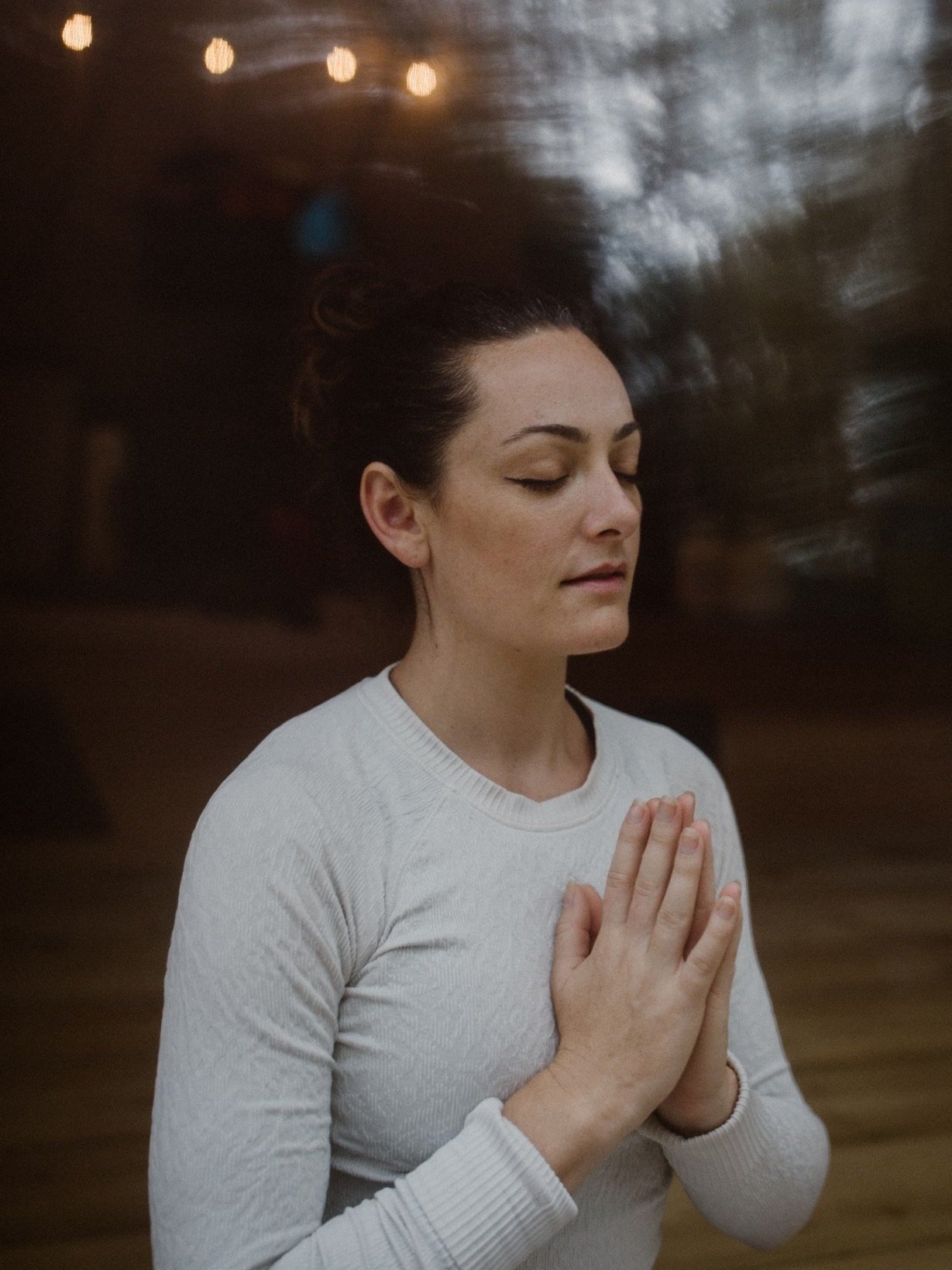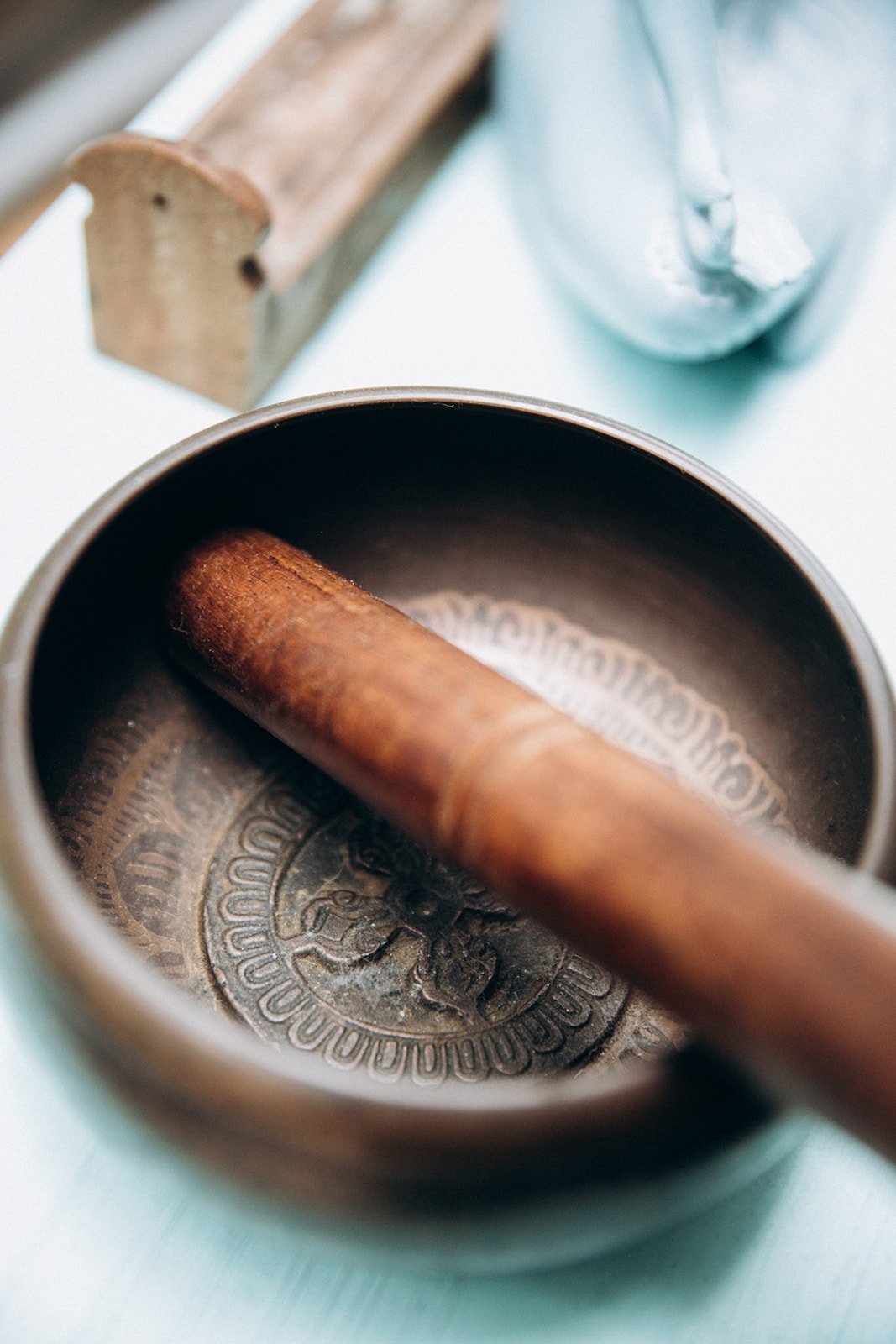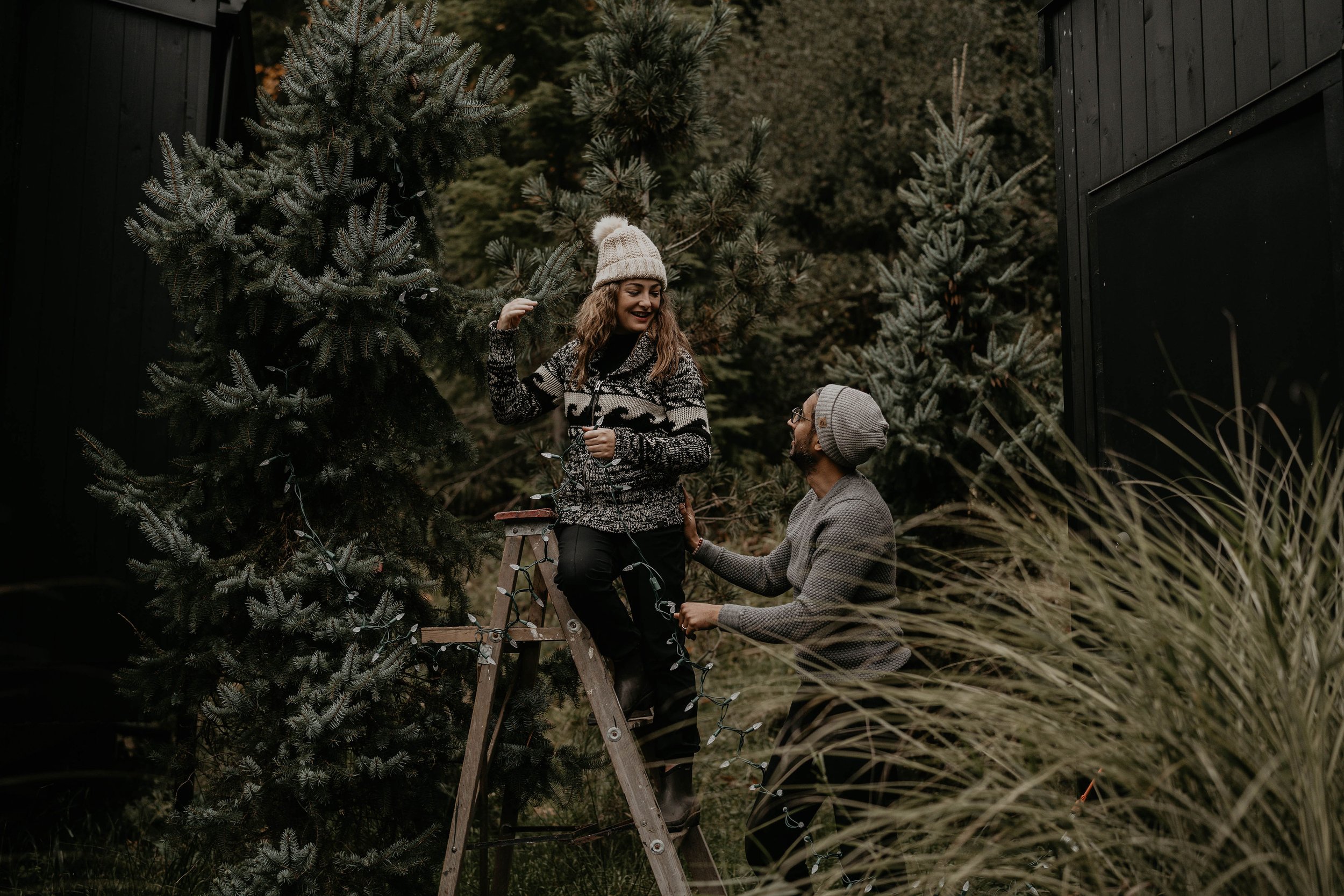At its core, Isvara Pranidhana calls upon us to release our grip on the illusion of control. The practice urges us to let go of the ceaseless pursuit of ego-driven ambitions and the false belief in our hyper-individuality-based abilities. Here at Nectar Yoga Retreat, sitting with humility as a teacher is a lifelong journey.
Ayurvedic + Yoga Practices For Peaceful Holidays
Often referred to as the sister of yoga and science behind it, Ayurveda principles, practices and its natural medicines can be a potent resource to root your daily wellness and routine to.
The hustle of the holiday season is upon most of us in one form or another. At Nectar Yoga, we are holding space for all of us to remember to slow down and come back to the sacred traditions (and their meaning) surrounding the upcoming holidays and their celebrations that are approaching.
As noted in last year’s holiday blog post, while these times of union and merriment are joyous occasions we look forward to, they also may involve a disruption in your routine, including less time for your usual self-care practices, and more energy being directed towards others.
When we remain rooted and mindful, the celebrations can be an especially wonderful time of the year. When we forget to approach this season with intention, our minds can whirl too quickly, and we can lose ourselves in overwhelm and chaos.
Grounding ourselves in the living yoga practices and principles of Ayurveda are the supportive limbs we can lean on. These can also guide our path so we stay present and peaceful.
*As always, consult your medical team before changing your routine or begin consuming any Ayurvedic advice. All information Nectar Yoga shares is for educational purposes only. For sources cited, scroll to the end of this post.
Merely delving into two of the 8 limbs of yoga, the Yamas and Niyamas, we find true reminders of the reason for the season, and how we can revel in it all.
Expanding on the Niyamas of Svadhyaya and Santosha, we can stay aware of our true intentions and expectations.
Svadhyaya (self-study)
The Sanskrit translation of “Sva” means ‘self,’ or ‘ own’ with “Adhyaya” translating to ‘lesson,’ or ‘reading,’ and while it can imply the practice of studying scriptures, it is also a practice of studying the Self.
When we listen to our ego, we often do or think things that do not align with our true values or intuition, and instead, we may find ourselves stagnant in fears, frustrations and doubts. This essentially causes our own ‘Chitta Vrittis’ (‘fluctuations of the mind’). Bringing our awareness to the way we go about our day allows us to become more aware of the things we do that harm us, and also that which brings us closer to that process of yoking with the our truest self.
Santosha (contentment)
This Niyama asks you to be aware that whatever you have in the present moment is enough. Once you can consistently practice this, happiness will find an enduring place in your life. Santosha is a practice that cannot be found, rather it will find you once you have created the space for it.
On the yoga mat this can look like acknowledging your tendency to strive to do a ‘perfect pose’ yet meeting yourself where you are, using props or making modifications without feelings of shame or disappointment, and instead, holding gratitude for that all your body does for you. Off the mat this comes in various forms of releasing assumptions or expectations surrounding someone or something, and meeting everyone and everything exactly as you find it.
Revisiting the Yamas of specifically Satya and Asteya we give ourselves permission to release our judgements, unrealistic, or unfair assumptions we may have attached to others, events, or ourselves.
Satya (truthfulness)
Beyond the practice of “not lying,” practicing Satya is living in a way that aligns with your highest truth. It revolves around about being honest with yourself, with others, and abstaining from judgment — ensuring that you are consistent in speaking and acting with mindfulness and intention, rather than blurting out whatever fleeting thought from your mind.
Asteya (non-stealing)
This goes beyond the obvious of what theft typically is, and is more than just not taking a physical object that does not belong to you. We can factor in hoarding items as we shop for gifts, and take a pause in reminding ourselves that quality is always superior to quality, that consuming, even when it’s a gift for others, does not need to meet a certain quota of spending or number of presents bought to enjoy our holiday celebrations. And then we can go deeper still – considering the act of stealing time and energy. Time is something that reflects differently for every person, but it’s helpful to take note of what you are spending your time thinking of - does it serve you now and you in the future or is it robbing you of the gifts of the present? Similarly, do you engage in thoughtless actions that may have a undesired “time impact” on others?
In Ayurveda one of the most efficient ways to remain well is to maintain a daily routine, or dinacharya. These are daily activities that are practiced regularly and thus contribute to maintaining overall vitality.
These rituals typically fall under (yet are not limited to) the categories surrounding eating well, having a consistent (and flexible) movement practice, meditation practices, journaling sessions, seasonal oil massages, and sufficient sleeping routines.
Some details to keep in mind surrounding an optimal dinacharya this month in particular include:
Eating early. Ayurveda teaches that lunch should be the biggest meal of the day. The digestive fire, our Agni, is hottest at high noon, mirroring Mother Nature’s midday heat of the sun. This can be difficult to cater to as most seasonal gatherings tend to be scheduled in the evenings. Try to eat as early in the evening as possible, and avoid over-indulging in the waning evening hours. If you’re hosting a gathering, consider making it a brunch event or late-afternoon meal. Eat your heavier foods first and lighter foods last.
Stay moving. During the holiday season, stay consistent with your movement practices. Many of us are overscheduled, overworked, and overtired during the holiday season, our Asana yoga practice or other preferred movement practices will supports us in recalibrating to a calm, stable energy; properly functioning digestion; and lending patience to handle your busy schedule and unforeseen hiccups. Schedule time for yoga at home or going to an in-person class, put as much importance in this practice as you do for holiday shopping and the other seasonal items on your to-do list. Whenever possible, take a 15- to 30-minute walk after big meals.
Hydrate with care. Drink a glass of warm water in the morning to stimulate your digestion. If you’re appetite is lacking from recent over-indulging the night before, sip on ginger tea until your appetite returns. Ginger is known for its warming, digestive, and detoxifying properties.
Meditate. Remove any timeframe expectations. 5-10 minutes a day can be more potent that you think. Setting aside time each day to intentionally experience silence, connect with yourself, and let go of what needs release creates space to receive the upcoming joys of the season.
When it comes to attending the celebrations of the season, keep coming back to your inner awareness and intuition.
It’s common (and understandable) to want to attend every party and see everyone who is in town visiting, the various options of people to see and places to go that comes with the holidays can feel like a beautifully laid-out buffet with that similar appeals to sample everything.
Over-indulging in parties (and the array of foods they typically include) generally result in feeling tired or unwell. Our intuition often reminds us that the best approach is to select what you really enjoy and leave the rest to try next time; we fare better when we honour our inner wisdom.
When it comes to invitations for holiday events, be intentional with who you say yes to, and be liberal with grateful declines. Gift yourself the time and space of the presence of people and experiences that fully nourish you.
Some tools to bring along to the events you do attend:
*via Dr. Marlynn Wei, M.D., J.D.
Practice active listening. It’s easy to tune out during holiday gatherings, but try being attentive by using active listening. Try to understand the complete message that people are conveying—not just through their words, but also through their actions as well as body language. It’s a rewarding practice when we notice just how much more we can observe and hear. [If you’re feeling over-stimulated, give yourself permission to excuse yourself and take a moment to recalibrate with some favourite affirmations, or a quick breathwork practice.]
Active listening works best when distractions are minimized, there is much value in putting away the smartphone, turning off the TV, and even turning down the music so that you can hear what people are saying via their whole beings.
Be open to the emotions of others. By being attentive and receptive to the people around us, we are invited to increase our ability to connect. Observe how people are feeling during the holidays, and be open to communication of those feelings.
Be open to a range of emotions in yourself. Holidays can bring up a whole host of different emotions—and not all of them happy or celebratory. For many, the holidays can be reminders of loss, grief or feelings of loneliness. If you experience these difficult feelings, especially when loved ones are absent, allow yourself to make space and acknowledge whatever emotions come up for you rather than try to get rid of them. Healing comes through acceptance.
Let go of old habits or patterns that might be holding you back. Holidays come with traditions and memories but, sometimes, old patterns can perpetuate negativity. It’s easy to fall into familiar patterns. When knee-jerk reactions surface, notice them, and try to be curious about what is happening, rather than being stuck in thoughts or feelings you might be carrying from the past. This opens the possibility of a new experience in your interactions and can reduce feelings like frustration, overwhelm, or boredom for you.
Expand how you communicate care. The holidays often means gift-giving for many cultures, though there are many other ways of showing that you care. Explore how you show your care by asking yourself questions before buying something: What are you trying to communicate through a gift? Are there additional ways to show that feeling or care, such as spending quality time, expressing how you feel about them directly, or doing something nice and supportive?
Let go of judgment—both for yourself and others. Conflict with family and friends during the holidays can lead to judgment and self-criticism. Whether you catch yourself feeling resentful or feeling disappointed, notice when you’re making judgments. Take a step back and try to loosen those feelings of being “bad,” “wrong,” or “inadequate.” Even if it’s hard to let go of criticism completely, simply notice when it is happening and let those thoughts be without entangling yourself in them to give yourself perspective and insight that can ultimately shift you.
Balance the “shoulds” with awareness of your own needs. Holiday obligations can be important but be sure to balance them with awareness of your own needs. Operating on obligations alone, and trying to please everyone’s expectations can lead to resentment and burnout. Rather than focus solely on planning the perfect dinner or finding the perfect gift, observe how these expectations affect you. It may not always be realistic to approach this perfectly, but any small step can have a positive impact.
Practice self-compassion. During a busy holiday season, don’t forget to take care of yourself, and be kind to yourself. Commit to regular sleep and exercise, and take time to do relaxing or fun things so that you can recharge. Taking care of yourself allows you to be able to be more attentive and calmer when you’re with others during the holidays. You may even find that when you take care of yourself, you experience the gift of the season in a fuller, more embodied way.
Additional wellness practices to consider this month
The Herb Guduchi
The herb guduchi** is known in Ayurvedic medicine for the power to detoxify, rejuvenate, boost immunity, and more.
In Sanskrit, Guduchi translates to “that which protects the body from diseases” and it helps to rebalance your energy and wellbeing. Guduchi is used to reduce stress, calm the mind, and to promote clear thinking. It’s also been used to":
Support joint health
Reduce stress
To increase antioxidants
Support the immune system
Fight inflammation
**As always, consult your medical team before changing your routine or begin consuming any Ayurvedic advice. All information Nectar Yoga shares is for educational purposes only.
Self-massage with oils
This relaxing practice can be done year-round, however if it’s something new for you, it may be worth trying this month especially. Using warm oil for body massage helps maintain a healthy complexion, relieve muscle tension, promote good sleep, and cleanse excess toxins from the skin.
How and when to do a warm oil massage:
This is best done before taking your morning or evening shower. Choose your preferred oil (it’s often suggested to use coconut, apricot, or sunflower). You can warm the oil by submerging the jar or bottle in warm water, or use at room temperature if you prefer. Begin at the feet, applying the oil with your fingers, making circular motions around the joints. Then, make vertical strokes up your legs and abdomen. Allow the oil to sit for about 15 minutes before showering.
Many of us neglect self-care practices during the holidays, but incorporating these ancient practices as part of your busy day may help soothe overworked nervous systems.
Take care of your heart
Ayurveda claims that the human heart has two parts: the physical heart and the emotional heart, particularly during the holiday season, our emotional hearts often carry an unnecessary, heavy burden.
A tired emotional heart can negatively impact us overall, though specifically, hormonal imbalance, energy, and overall wellbeing.
Release the burdens on your heart with a gratitude practice each morning, this can be done mentally or through various forms of journaling styles.
Sources Cited:
Acknowledgement and thanks to the contributing resources of this publication, Erin Casperson via Kripalu Centre for Yoga + Health, Dr. Taz Bhati, M.D., Dr. Marlynn Wei, M.D., J.D., and Chara Caruthers
Gratitude to our community near and far, both for taking the time to explore our blog and for walking the path to your best self - we hope this resonated and aids you in finding balance within.
Let us know in the comments your favorite traditions to celebrate the holidays over the coming weeks!
All Photos - Nectar Yoga Copyright
Pranayama Practice For A Stress-Free Holiday Season
There are an array of major religious holidays celebrated each year from November to mid-January and with them generally includes opportunities to gather and celebrate with loved ones.
While these times of union and celebrations are joyous occasions, they also typically involve a major shift in your routine, including less time for your usual self-care practices.
In Sanskrit, the word prana translates to “life force” and yama to “gain control” . Yoke the two together into controlled + conscious practices of the breath, Pranayama.
In this blog we outline the benefits of mindful breathwork and a simple yet potent pranayama practice you can explore over the busy holiday season to ensure you’re staying grounded and keeping your own cup full before pouring into others’.
It is common during this time of year in particular for the sympathetic nervous system to be overstimulated from the longer to-do lists that come with preparing for and participating in the holidays.
The sympathetic nervous system controls our fight or flight instincts, which when constantly charged is overwhelming to the body, mind and spirit.
The counter-stimulation of your the parasympathetic nervous system (your rest + digest “mode”) is necessary to stay balanced, which means taking time for yourself to pause and recuperate.
…which is easier said than done, especially during this busy holiday season. However, even a few moments of intentional breathwork can reverse the effects from a triggered sympathetic nervous system and activate the parasympathetic nervous system in high energy moments.
Full breaths coming from the entire lunge capacity (rather than shallow breaths from the upper chest - during fight or flight mode) stimulates the vagus nerve in the parasympathetic nervous system, slowing your heart rate, lowering your blood pressure, and calming the mind + body.
Try out one of our favorite pranayama practices (outlined below) the next time you’re feeling anxious or overwhelmed; allow yourself to come back to the body and reactivate your parasympathetic nervous system, grounding you back into yourself and the present moment.
“Box Breathing”
Sometimes referred to as 4-count breathwork, this type of conscious breathing follows an equal timing for inhaling, holding, exhaling and holding.
Starting with a lower timeframe such a four seconds, begin by inhaling while counting inwardly to four, hold the breath without tensing the body for the count of four, before exhaling while counting inwardly to four as you finish the exhale. Hold the breath out for four seconds before repeating.
You can do this for as many repetitions as you’d like, potentially increasing the count time slowly, every few cycles and building to longer, stronger deep breaths.
Make sure to Follow Us On Instagram for our Chakra Video Series of December, a 7-video series of various other pranayama practices led by Nectar Creatrix, Andrea Clark.
Sending gratitude, peace and holiday wishes to you, our community, may all your dreams come true as we step into a merry + bright new year.
All Photos - Nectar Yoga Copyright



